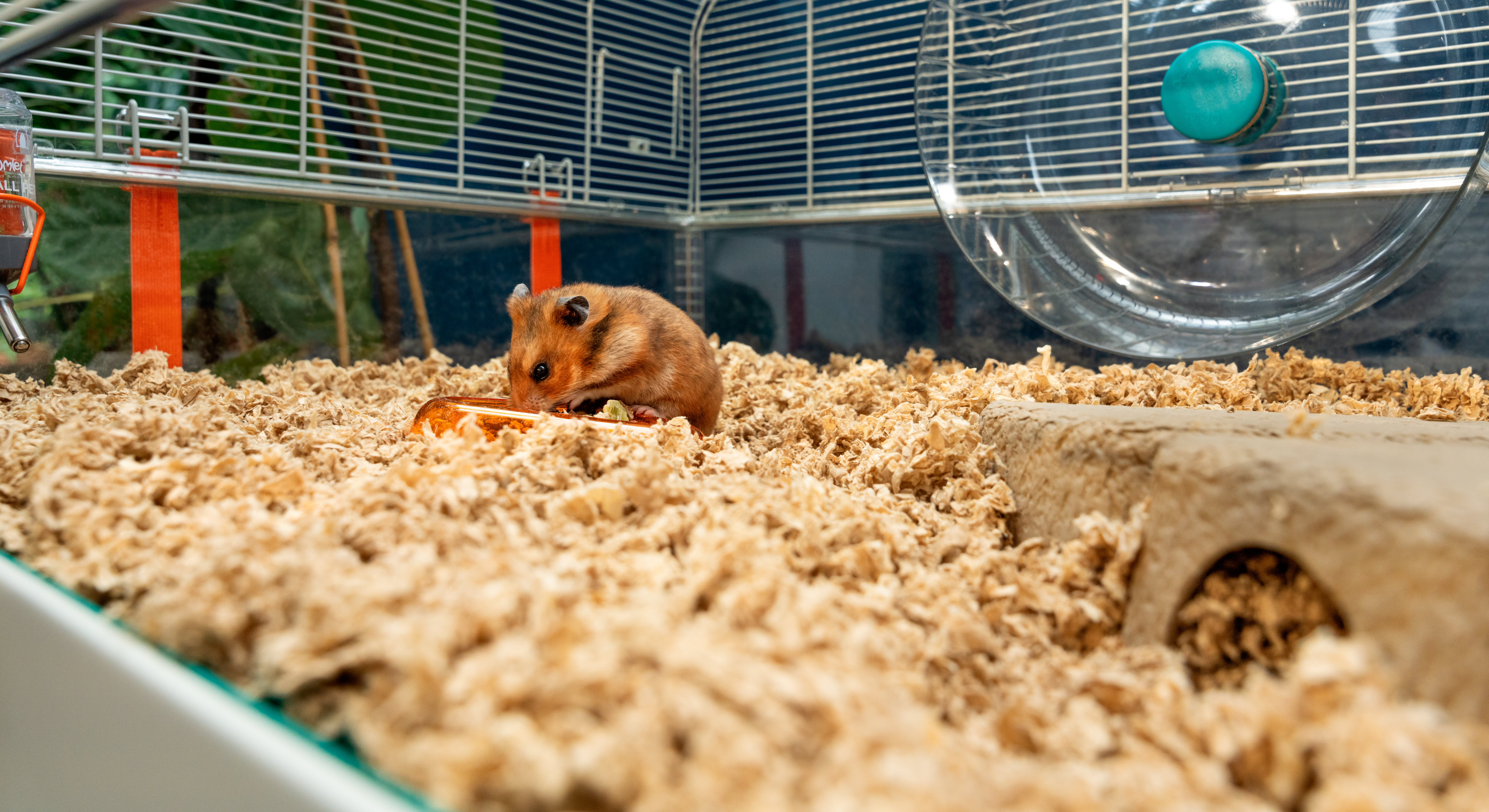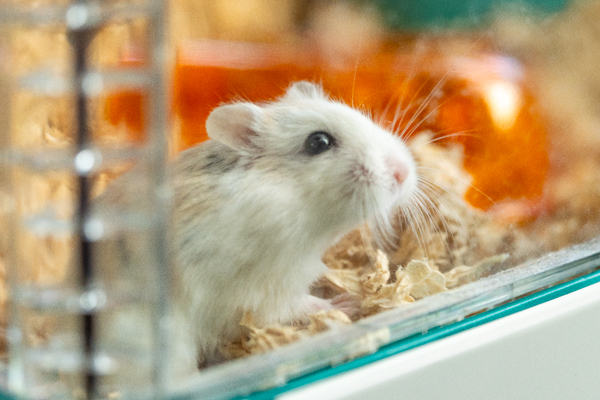Hamsters make great first pets for children, and entertaining companions for people of all ages. They’re relatively low-maintenance, and once you know how to care for them, keeping them happy and healthy is truly enjoyable. Learn all about hamsters — from their origins to their natural habitats, discover how hamsters have made their way into the hearts and homes of humans all over the world.
What does the word “hamster” mean?
The name “hamster” is derived from the German word “hamstern”, which means “hoarder.” Hamsters stuff food in their cheek pouches to stash away in their nests, which earns them this title. These kleptomaniac tendencies are useful in the wild where hamsters spend most of their waking hours collecting food to store for scarcer months. This survival instinct has trickled down to domesticated hamsters — no matter how often you offer them food, they’ll still hoard in their nesting area, around their cage, and in their bedding.

Hamsters love to create little hoards of food
Hamsters in the wild
There are actually over 20 different species of hamsters, found in various places around the world. It may be hard to envision our cute, domesticated pets living in rugged or harsh conditions, but wild hamsters can be found throughout Europe and Asia. Because these areas have extreme climates, hamsters in the wild have adapted to scorching heat, freezing temperatures, and fast seasonal transitions. They’re able to make homes in rocky or desolate terrains, and in dense vegetation.
Wild hamsters build burrows in the ground to overcome these hardships. Temperatures underground remain more constant than the ambient temperature above, making these tunnels and burrows a hamster’s ideal abode. They’ll visit the surface to gather food in their cheek pouches, then carry their findings back to their burrows for safekeeping.
The coloring of hamsters’ coats also helps them evade predators. Most species are light brown or gray in color, with pale or white stomachs. Their main color acts as camouflage against predators, while their pale stomachs reflect the heat emanating from rocks and sand. This appearance has carried over to the domestic hamsters that we know and love, but throughout the years breeders have introduced new colors and patterns.
History of hamsters as pets
The first type of hamster to be domesticated was the Syrian hamster. British zoologist George Robert Waterhouse first discovered this type of hamster in 1839, calling it Mesocricetus auratus — meaning “Golden Hair”. Syrian hamsters are still often referred to as Golden Hamsters, regardless of their color.
In 1930, a female Syrian hamster and her litter were captured and taken from their underground burrow in Aleppo, Syria, to a lab in Jerusalem, Israel. They were studied, and became known for their friendly demeanor and quirky characteristics. Since they were easy to care for, some were taken home, and thus became the first hamsters to be kept as pets. The Jerusalem lab sent the offspring of these captured hamsters to other labs around the world, and the beginning of worldwide domestication began.
In 1938, hamsters found their way to the United States, and by 1946 were popular as pets. Today, hamsters remain one of the most popular pets in the US. All domesticated Syrian hamsters can trace their lineage back to the original 1930 litter from Aleppo.
Types of hamsters
There are only 5 breeds of hamsters that have been domesticated, 2 of which are relatively new to the pet scene. The 5 breeds kept as pets are:
- Syrian
- Roborovski
- Campbell’s Dwarf Russian
- Winter White
- Chinese
The newest species of hamsters to be domesticated are the Roborovski and Chinese. These breeds are small, quick, and have more inherited traits from their wild cousins than the species with a longer domestic history.

Each species of hamster has it's own unique history
Are hamsters rodents?
Hamsters are a member of the rodent family, along with other pets like gerbils, guinea pigs, mice and rats. Rodents make up a large group of mammals that occupy most parts of the globe. Most members of the rodent family live in burrows, tree hollows, or thick vegetation. Hamsters most resemble their distant cousin the mouse — but lack the long, hairless tail.
Are hamsters nocturnal?
Like most other rodents, hamsters are nocturnal — meaning they are most active at night. Hamsters prefer to sleep all day and will begin their active hours close to dusk. They’re still active first thing in the morning, but will head off to bed shortly after sunrise. It’s important not to rouse a hamster from their daytime slumber, but many domestic hamsters can adapt to their owners’ schedules to be more active during the evening. Still, all hamsters prefer to sleep during daylight hours.
Omlet and your hamsters
Creating containment systems that don’t cage your pets’ personalities is what we’re all about. Discover how our hamster cages and accessories go above and beyond the norm of small pet ownership. With designs that are derived from your hamster’s natural behaviors, your little being can live their biggest life.
Comments
Jillian, 18 January 2025
What type of bedding do you use in your habitat videos? Is there a brand you recommend?